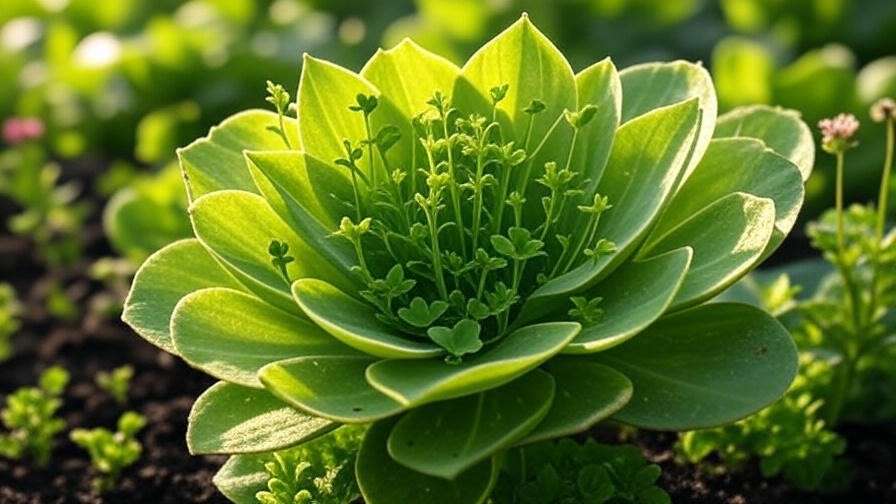Imagine doubling your gingelly plant harvest with just a few smart tweaks to your farming practices. With global demand for sesame seeds soaring—projected to reach a market value of $9.8 billion by 2027—mastering gingelly cultivation is a golden opportunity for farmers. Whether you’re a small-scale grower or managing vast fields, the gingelly plant (Sesamum indicum) offers a low-maintenance, high-reward crop. Yet, challenges like poor soil, pests, and inefficient techniques can slash your yields. This article unveils seven proven, expert-backed tips to optimize your gingelly plant growth, boost productivity, and maximize profits. From selecting the right variety to mastering post-harvest handling, these strategies will empower you to overcome obstacles and thrive in sesame farming.
Understanding the Gingelly Plant
What Is the Gingelly Plant?
The gingelly plant, commonly known as sesame (Sesamum indicum), is one of the oldest cultivated crops, with origins tracing back over 3,000 years in Africa and India. Today, it’s a staple in tropical and subtropical agriculture, prized for its nutrient-rich seeds and versatile oil. Gingelly seeds are used in culinary applications (think sesame oil and tahini), industrial products, and even traditional medicines. For farmers, the gingelly plant’s appeal lies in its adaptability and profitability, making it a smart choice for both smallholder and commercial farming operations.
Key Characteristics of the Gingelly Plant
Gingelly plants are hardy annuals that thrive in warm climates with temperatures between 21°C and 30°C. They grow 1–2 meters tall, producing small, bell-shaped flowers that develop into pods containing 50–100 seeds each. The plant’s growth cycle spans 90–120 days, depending on the variety and conditions. According to research from the Indian Council of Agricultural Research (ICAR), gingelly is drought-tolerant and adaptable to various soil types, though it prefers well-drained, loamy soils with a pH of 5.5–7.5. Its resilience makes it ideal for regions with erratic rainfall, but optimal care can significantly boost yields.
Why Maximizing Gingelly Yield Matters
The Economic and Environmental Benefits
The global sesame market is booming, driven by demand for healthy cooking oils and plant-based foods. The Food and Agriculture Organization (FAO) reports that sesame seed production reached 6 million tonnes in 2023, with prices steadily rising. For farmers, higher gingelly yields translate to increased revenue, especially in export markets like Asia and Europe. Environmentally, gingelly is a sustainable choice: it requires less water than crops like rice and enhances soil health when used in crop rotation. By optimizing yields, farmers can achieve both economic gains and eco-friendly practices.
Common Challenges in Gingelly Cultivation
Despite its resilience, gingelly cultivation faces hurdles. Poor soil fertility, pest infestations (like aphids and pod borers), and diseases (such as wilt and leaf spot) can reduce yields by up to 30%, per ICAR studies. Improper irrigation and untimely harvesting further compound losses. These challenges are solvable, and the following tips provide practical, science-backed solutions to help farmers overcome them and achieve bumper harvests.
7 Proven Tips to Boost Gingelly Plant Yield
Tip 1 – Select the Right Variety for Your Region

Choosing the right gingelly variety is the foundation of a successful harvest. Varieties like TMV 7 (high-yielding, drought-tolerant) or black sesame (prized for its oil content) perform differently based on climate and soil. For example, white sesame varieties like Gujarat Til-10 are ideal for sandy soils in arid regions, while black sesame thrives in humid climates. Consult local agricultural extension services to identify varieties suited to your area. Below is a comparison of popular gingelly varieties:
| Variety | Yield Potential | Drought Tolerance | Growth Period |
|---|---|---|---|
| TMV 7 | 800–1000 kg/ha | High | 85–90 days |
| Gujarat Til-10 | 700–900 kg/ha | Moderate | 90–100 days |
| Black Sesame | 600–800 kg/ha | Moderate | 100–120 days |
Expert Tip: ICAR recommends testing new varieties on a small plot before scaling up to ensure compatibility with local conditions.
Tip 2 – Optimize Soil Preparation and Fertility
Healthy soil is critical for gingelly plants. They thrive in well-drained, loamy soils with a pH of 5.5–7.5. Conduct a soil test before planting to assess nutrient levels and pH. Incorporate organic matter like compost or well-rotted manure to improve soil structure. Phosphorus (30–40 kg/ha) and potassium (20–30 kg/ha) are essential for root and seed development, per agricultural studies. Crop rotation with legumes like groundnuts can fix nitrogen and enhance soil fertility.

Case Study: Farmer Ramesh Patel in Gujarat increased his gingelly yield by 25% by adding 2 tons/ha of compost and rotating with chickpeas, improving soil health and reducing pest pressure.
Tip 3 – Perfect Your Planting Techniques
Timing and technique are key to maximizing gingelly plant growth. Plant during the onset of the monsoon (June–July in India) or when temperatures are consistently above 20°C. Sow seeds at a depth of 2–3 cm with a spacing of 30 cm between rows and 10 cm between plants to ensure adequate light and air circulation. For small farms, manual sowing works well, while mechanized planters can save time on larger fields. Aim for a seed rate of 4–5 kg/ha to achieve optimal plant density.
- Prepare the field by plowing and leveling.
- Test and amend soil as needed.
- Sow seeds evenly, avoiding overcrowding.
- Cover lightly with soil and water gently.
Tip 4 – Implement Efficient Irrigation Practices
Gingelly plants are drought-tolerant but require strategic watering to maximize yields. Over-irrigation can cause root rot, while under-watering stunts growth. Drip irrigation is ideal, delivering 2–3 cm of water per week during vegetative growth and flowering. Rain-fed systems work well in areas with reliable rainfall (500–1000 mm annually). Reduce watering during pod formation to prevent cracking.
Watering Schedule:
- Vegetative Stage: 2 cm water/week.
- Flowering Stage: 3 cm water/week.
- Pod Formation: Reduce to 1 cm/week.

Expert Insight: A 2022 study from Tamil Nadu Agricultural University found that drip irrigation increased gingelly yields by 15% compared to flood irrigation, while saving 30% of water.
Tip 5 – Manage Pests and Diseases Naturally
Pests like aphids and pod borers, and diseases like Fusarium wilt, can devastate gingelly crops. Integrated Pest Management (IPM) offers effective, eco-friendly solutions. Spray neem oil (5 ml/liter) to deter pests, and plant marigolds as a companion crop to repel aphids. For diseases, ensure proper drainage and avoid overwatering. Rotate crops to break pest and disease cycles.
Natural Remedies:
- Neem Oil Spray: Mix 5 ml neem oil with 1 liter of water; apply weekly.
- Companion Planting: Marigolds or onions deter pests.
- Biofungicides: Use Trichoderma viride to control fungal diseases.
Case Study: Farmer Lakshmi Reddy in Andhra Pradesh reduced pod borer damage by 40% using neem oil and intercropping with marigolds, boosting her yield to 900 kg/ha.,
Tip 6 – Enhance Pollination and Flowering
Pollination is critical for maximizing gingelly plant seed production, as each flower can develop into a pod containing dozens of seeds. Gingelly is primarily self-pollinating, but cross-pollination by bees and other insects can increase seed set by up to 20%, according to research from the University of Agricultural Sciences, Bangalore. To attract pollinators, plant pollinator-friendly crops like marigolds or sunflowers near your gingelly field. Avoid pesticide application during peak flowering (30–50 days after planting) to protect beneficial insects. Temperature also plays a role: maintain optimal conditions (21–30°C) to ensure healthy flowering and pod formation.

Practical Steps to Boost Pollination:
- Plant pollinator-attracting crops within 100 meters of your gingelly field.
- Provide water sources (e.g., shallow trays) for bees.
- Monitor weather conditions and shield plants from extreme heat with shade nets if needed.
Expert Tip: Dr. Anil Kumar, an agronomist at ICAR, recommends intercropping gingelly with flowering plants to enhance pollination naturally, leading to higher yields without additional costs.
Tip 7 – Harvest and Post-Harvest Best Practices

Timing your harvest correctly is essential to prevent seed loss and ensure quality. Gingelly plants are ready for harvest when 70–80% of the pods turn yellow and the lower leaves begin to drop, typically 90–120 days after planting. Cut the plants at the base and bundle them into small stacks to dry in the field for 7–10 days. Thresh carefully to avoid seed damage, and clean seeds thoroughly to meet market standards. Store seeds in airtight containers in a cool, dry place to maintain quality.
Post-Harvest Checklist:
- Drying: Sun-dry bundles until seeds rattle in pods.
- Threshing: Use manual or mechanical threshers gently.
- Cleaning: Remove debris using sieves or winnowing.
- Packaging: Use moisture-proof bags for storage and transport.
- Grading: Sort seeds by size and color for premium pricing.
Proper post-harvest handling can increase market value by 10–15%, as clean, high-quality seeds fetch better prices in export markets.
Advanced Strategies for Scaling Gingelly Production
Leveraging Technology and Precision Agriculture
Modern technology can transform gingelly farming by optimizing resources and boosting yields. Soil sensors, for instance, monitor moisture and nutrient levels, enabling precise irrigation and fertilization. Drones can assess crop health and detect pest infestations early, saving time and reducing losses. Weather forecasting apps help farmers plan planting and harvesting around rainfall patterns.

Example: A cooperative in Tamil Nadu adopted soil sensors and drip irrigation, increasing gingelly yields by 18% while reducing water usage by 25%. By analyzing data from these tools, farmers adjusted fertilizer application, resulting in healthier plants and higher profits.
Tools to Consider:
- Soil Sensors: Measure moisture, pH, and nutrient levels (cost: $50–200).
- Drones: Monitor large fields for pests and disease (rental services available).
- Weather Apps: Free tools like AccuWeather or local agricultural apps for accurate forecasts.
Sustainable Practices for Long-Term Success
Sustainability is key to long-term gingelly farming success. Organic farming certifications can open premium markets, with organic sesame seeds fetching 20–30% higher prices. Intercropping gingelly with legumes like groundnuts or mung beans improves soil fertility and provides additional income. Cover crops like clover can prevent soil erosion and retain moisture between seasons. These practices not only boost yields but also align with global trends toward eco-friendly agriculture.
Example: A farmer group in Rajasthan adopted intercropping and organic methods, achieving a 15% yield increase and securing contracts with organic food companies, doubling their income.
FAQs About Gingelly Plant Cultivation
Q1: What is the best time to plant gingelly crops?
A: Plant gingelly at the onset of the monsoon (June–July in India) or when temperatures are consistently above 20°C. In tropical regions, a second crop can be planted in October–November, depending on water availability.
Q2: How can I protect my gingelly plants from pests without chemicals?
A: Use neem oil sprays (5 ml/liter), intercrop with marigolds, and introduce natural predators like ladybugs. Rotate crops annually to disrupt pest cycles.
Q3: What are the most profitable gingelly varieties?
A: High-yielding varieties like TMV 7 and Gujarat Til-10 are profitable due to their productivity and adaptability. Black sesame is also lucrative for its high oil content and market demand.
Q4: How much water does a gingelly plant need?
A: Gingelly requires 2–3 cm of water per week during vegetative and flowering stages, reducible to 1 cm during pod formation. Drip irrigation is most efficient.
Q5: Can gingelly be grown in poor soil conditions?
A: Yes, gingelly is adaptable to poor soils, but yields improve with amendments like compost and phosphorus. Soil testing ensures targeted improvements.
Conclusion
Maximizing your gingelly plant yield is within reach with these seven proven tips: selecting the right variety, optimizing soil health, perfecting planting techniques, managing water wisely, controlling pests naturally, enhancing pollination, and mastering harvest practices. By implementing these strategies, you can overcome common challenges like low yields and pest damage, boosting both productivity and profits. Advanced tools and sustainable practices further enhance your success, aligning with the growing demand for sesame in global markets. Start applying these tips today, monitor your results, and share your experiences in the comments below. For personalized advice, reach out to your local agricultural extension office or connect with fellow farmers to keep learning and growing.













